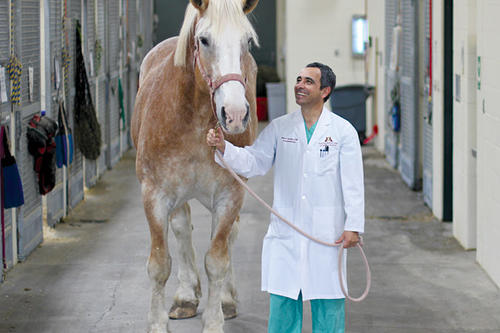
In the 1980s, researchers at the University of California, Riverside found an enzyme—called JHEH—that, when inhibited, prevents caterpillars from becoming butterflies. This work led to the discovery of an equivalent enzyme in mammals, called soluble epoxide hydrolase or sEH.
Today, University of Minnesota researcher Alonso Guedes is learning how to use sEH to advance pain management in veterinary—and eventually human—medicine.
“In mammals, the presence of this enzyme has the opposite effect—it diminishes the body’s ability to self-repair. Inhibiting it actually allows our cells to do their work,” says Guedes, an associate professor of veterinary clinical sciences.
Guedes and his team study how blocking this enzyme can help improve mammalian health, starting with horses suffering from laminitis—a severely painful disease in the hoof that makes horses (and other hoofed animals) unable to walk, develop, or behave normally. Euthanasia is currently the primary outcome for severe cases.
Certain proteins hold the tough tissue that connects the hoof to the bone (called the digital laminae) together. When the tissue is inflamed, as with laminitis, those proteins break down and the hoof’s connection to the bone breaks apart.
Guedes and his colleagues have developed a compound that inhibits the enzyme and allows for more blood flow and delivery of nutrients to the harmed area.
But crucial questions remain.
“We want to understand how this enzyme is working and how we can fine tune it to better use it to promote health,” says Guedes.
At the College of Veterinary Medicine’s Large Animal Hospital, Guedes has used the experimental compound on a few equine patients with laminitis and also arthritis. Some patients have shown results within a matter of days.
A similar compound has been tested in human clinical trials and resulted in improved outcomes for patients with neuropathy. And its effect on arthritis in horses could hold implications for human arthritis, too.
-------
The original version of this story appeared in profiles, a publication of the College of Veterinary Medicine.
- Categories:
- Health




